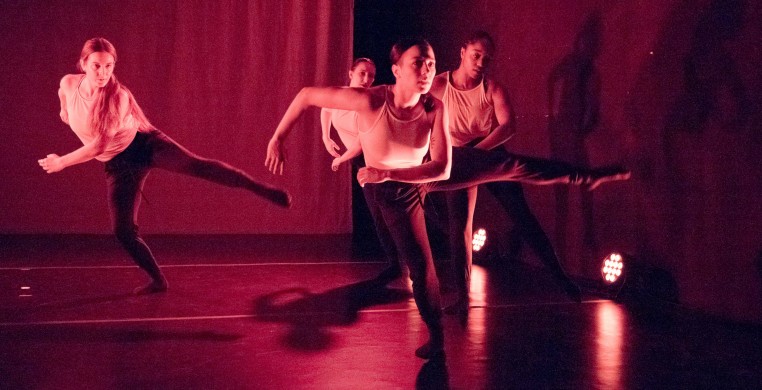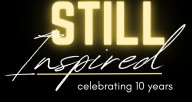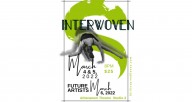As the snow melts and the ice thaws, dance companies and audiences are warming up to the idea of returning to live performances. This March saw live shows by large companies like Chicago Tap Theatre and Hubbard Street Dance Chicago, and the return of companies like Alvin Ailey American Dance Theatre. Chicago’s smaller black box theatres are also opening back up, housing performances by the community-driven, hard-working independent dance companies in abundance pre-COVID.
“Interwoven,” presented by the Still Inspired dance company, featured the work of four choreographers—Annie Conway, Brian Hare, Paige Fraser and Laura Thurston—in collaboration with one visual artist, Miguel A. Del Real, and held in the intimate Studio A theater located in the newly renamed Athenaeum Center for Thought and Culture. Originally set to premiere in January but suspended due to a spike in COVID cases, the 50-minute performance consists of four separate works, each one with a brief introduction by the choreographer. Although the space was sparsely lit, lighting designer Jacob Snodgrass made it work, getting the emotional ambiance of each work just right.
Each choreographer’s work is based on a different painting by Del Real, whose vibrant murals can be found in art galleries and on outdoor brick walls throughout Chicago. Each choreographer had a different choreographic process. Brian Hare prefers an improvisatory and in-the- moment approach to dance creation, while Annie Conway prefers a pre-planned and structured approach. No matter who is setting the work, company director Laura Thurston, in a pre-performance speech, spoke adamantly that the company’s collaborative approach to dancemaking is pervasive, extending beyond choreographer and visual artist to include the six-person company of dancers as well.
“The Best of Myself,” by Annie Conway, is based on Real’s “Untitled,” a painting that shows a woman’s head that is both humanoid and robotic, with tubes running in and out of her ears and mouth. The work is set to music by Ceeys and Olafur Arnalds, transforming midway from a looping 6-count canon to an eerie, macabre waltz. Five faces stare out from the foot of the stage, squinting against a bright light while a stealthy renegade grabs at a dusty black trench coat hanging from a skinny stand, causing the others to move against her, to defend the coat. As the phalanx moves in tandem, their o-shaped arms moving in concentric circles around their heads, the renegade is excluded from the group, cast aside, as one does with a social pariah whose views do not mesh with the community at large.
“OSO” by Brian Hare explores his fascination with affordable housing, set to electronic music by Murcof and droning instrumentals by Gem Club. Hare was inspired by a Real painting titled “Community Diligence” that hangs in the OSO Apartment complex, showing yellow bees and green beetles buzzing between orange orchids against a night sky made up of gradient shades of blue. A lone figure bathed in red light appears on stage, itching and undulating, under assault from dissonant and scratching violins. Three others appear, palms to their faces and chests contracted, their black and white attire mirroring the judgmental disposition of “in or out” as the group ostracizes the stigmatized loner. While the others sweep their legs in circles close to the ground, the loner, literally lifted out of their state of isolation, seems to change the minds and hearts of the others as they all gather in the center for an embrace.
“Everything is Falling” by Paige Fraser is a solo for Haley Marcin. Set to the song “Anything Worth Holding Onto” by Cynthia Erivo, the piece is inspired by Real’s painting titled “Ingrown,” which looks like a swirling compote of solar flares and sun burnt copper. Marcin spins her body and churns her wrists, stopping to focus and reach for some invisible fixed location above eye level, staring through her fingers, searching for… something. The voice of Erivo asks “Is there anything worth holding onto?” Maybe not, as Marcin continues to search and the lights fade out.
“Daydream,” by Laura Thurston, is inspired by Real’s painting, “Lucid Dreams,” a worm-like mound of dark and light blues that slip and slide in and around each other. Thurston creates a murky dreamscape where the sleeper, outlined in soft blue light, is in control of their own dream. A suffocating blue cloth engulfs the dreamer, evoking aesthetic parallels to Martha Graham’s famous work, “Lamentation”. The floundering dreamer, trapped in the cloth, is saved by the embrace of a cohort of other dream-beings—maybe fellow dreamers answering a telepathic call for help, maybe figments of the imagination. Free of confinement, the dreamer joins the others in a three-part canon—a rippling succession of bodies limply dropping to the ground, then springing back up into a spin, one curved leg behind them in arabesque. As consciousness approaches, the dreamers escape to the real world, stepping out of the dream and exiting through the audience.
During a short Q+A following the performance, each artist and performer expressed gratitude to once again be performing in a live setting. The audience was appreciative, too, and the packed house hooted, cheered, and applauded more than usual for a program that was relatively reserved and introspective. Although the dancing in “Interwoven” was cool, the audience was hot, and I, too, found myself defrosting in my seat, reveling in the shared sense of joy and community.



